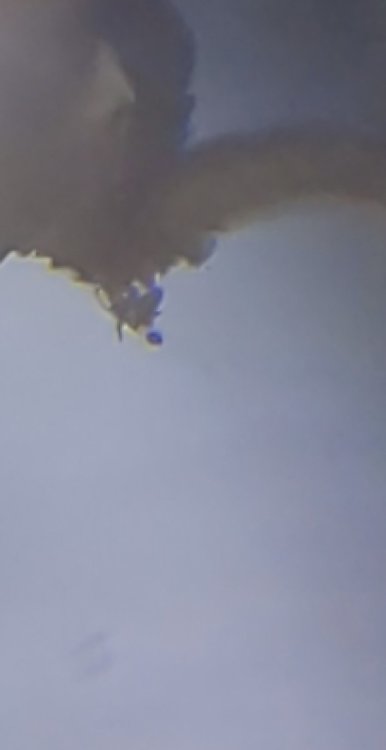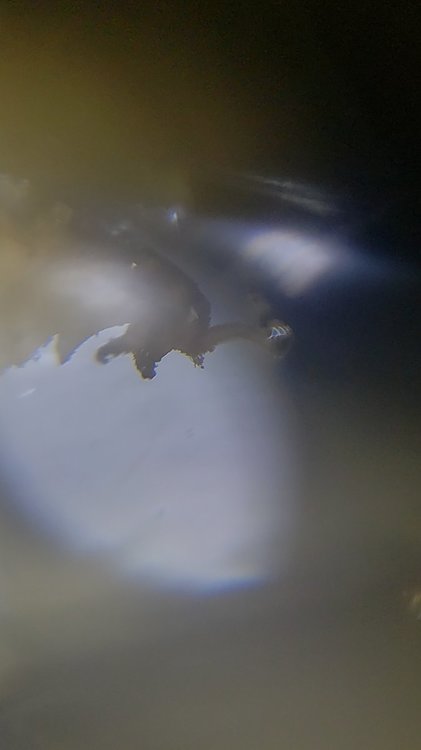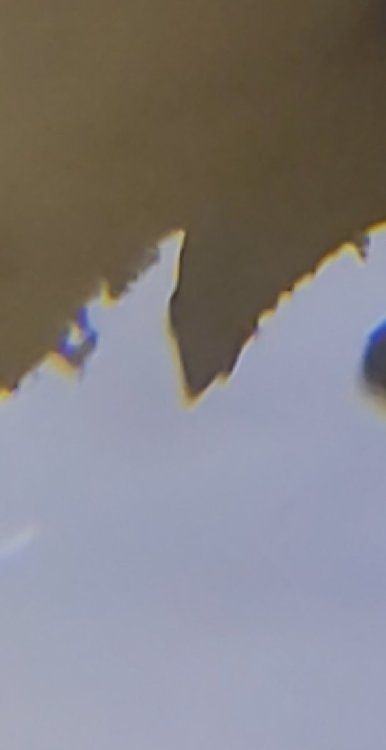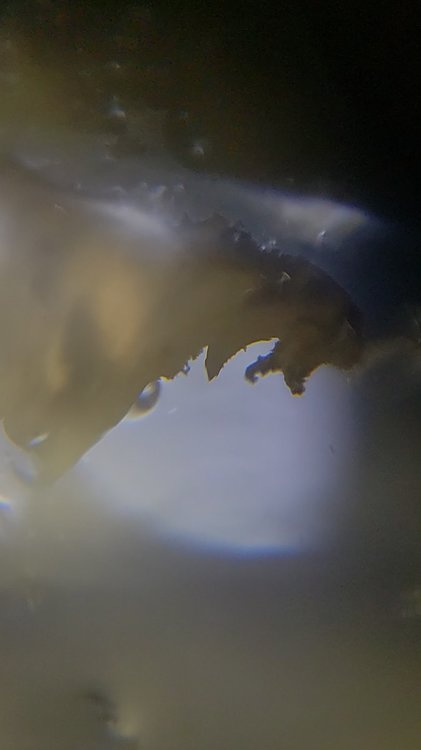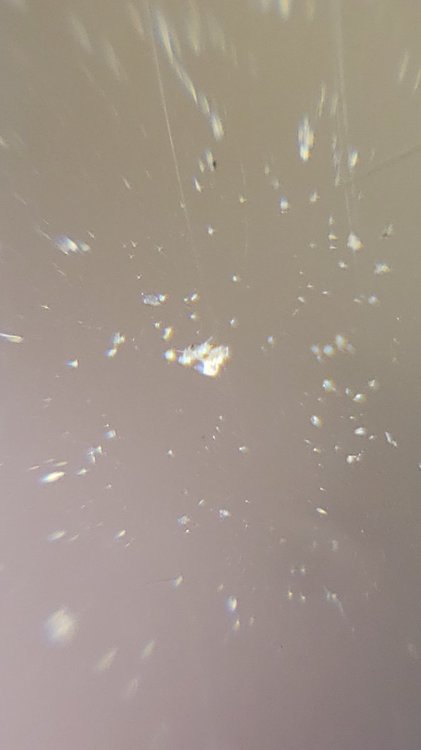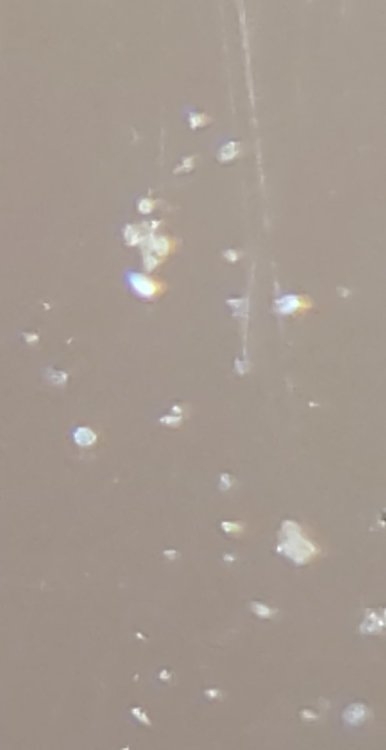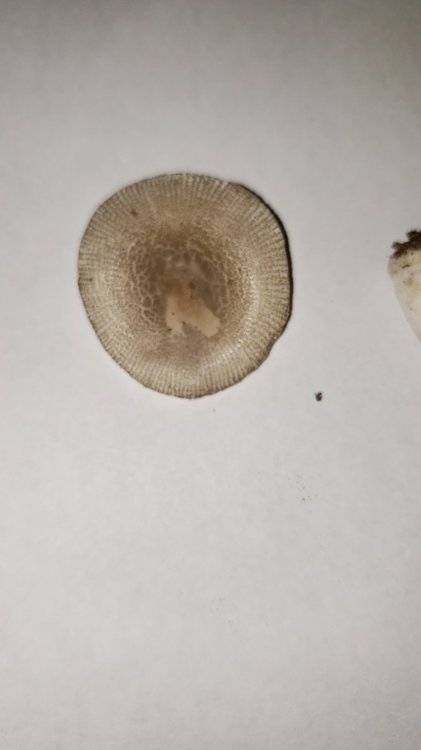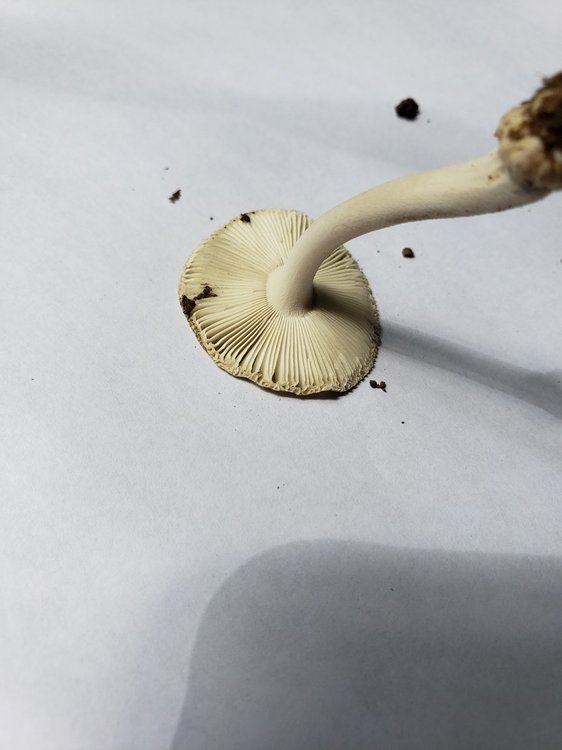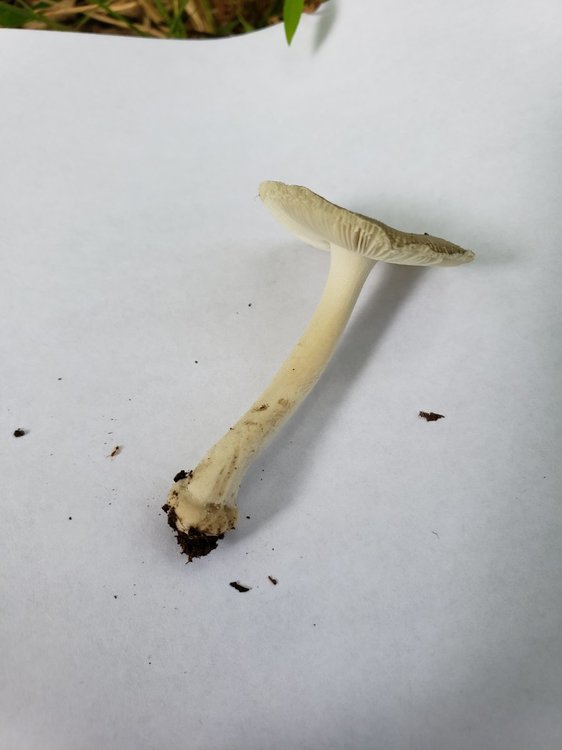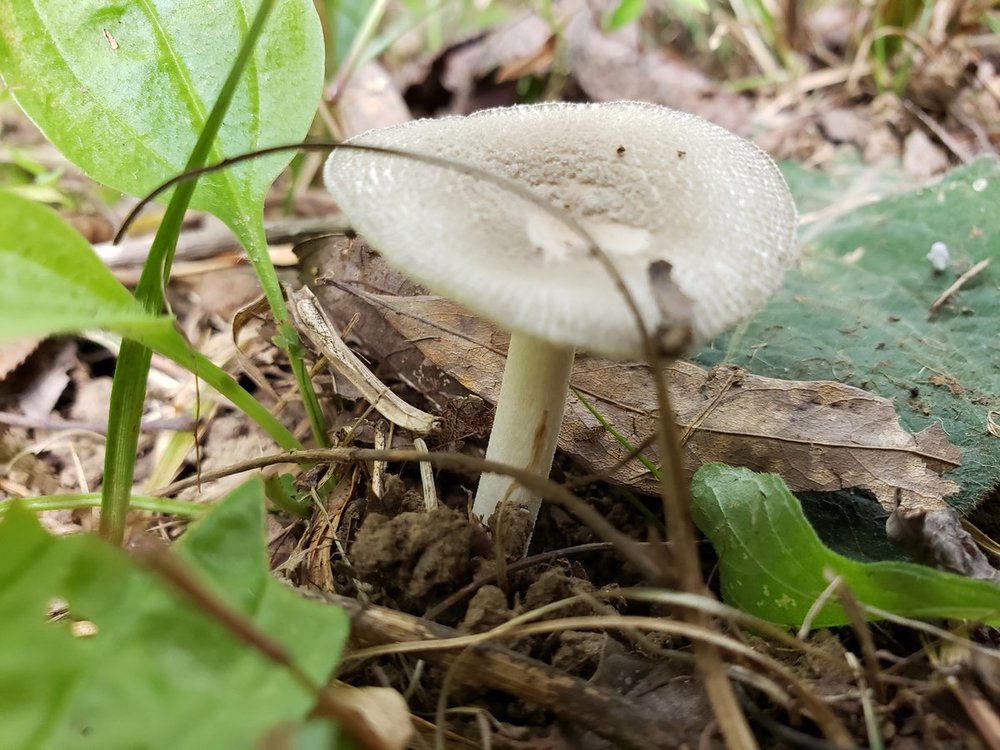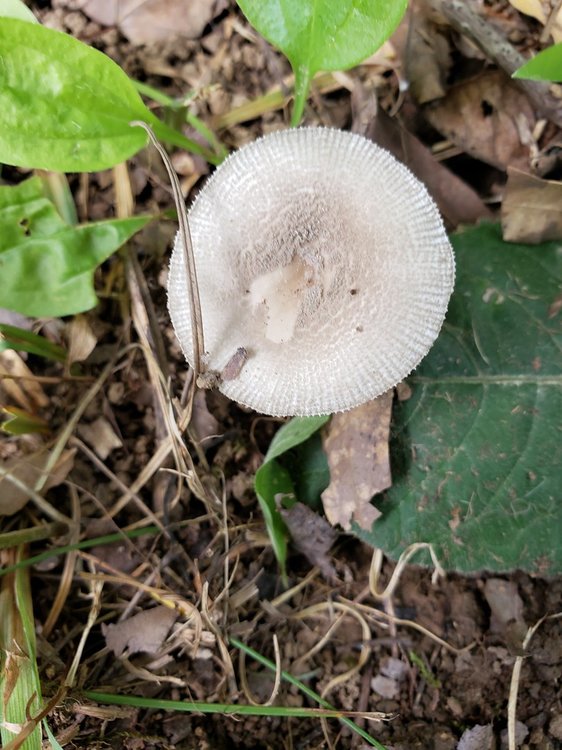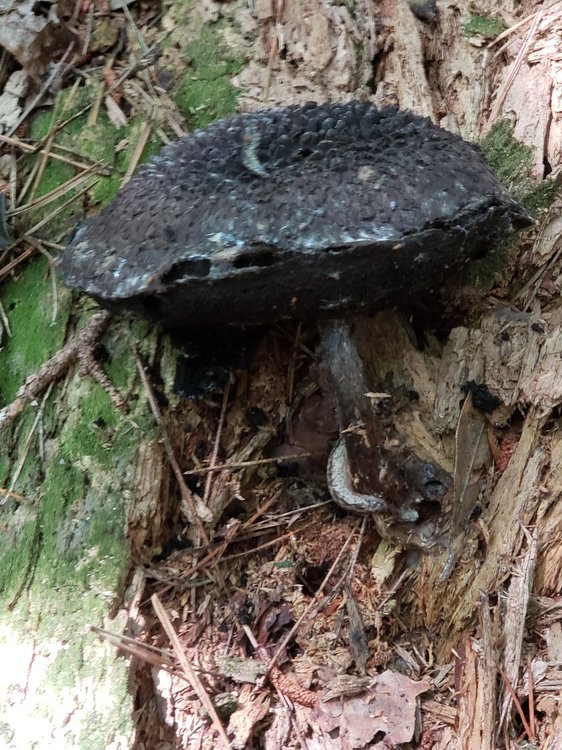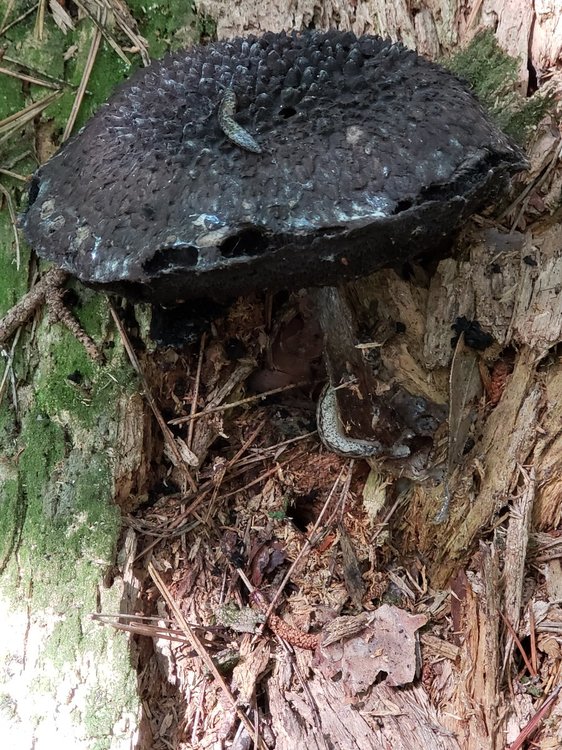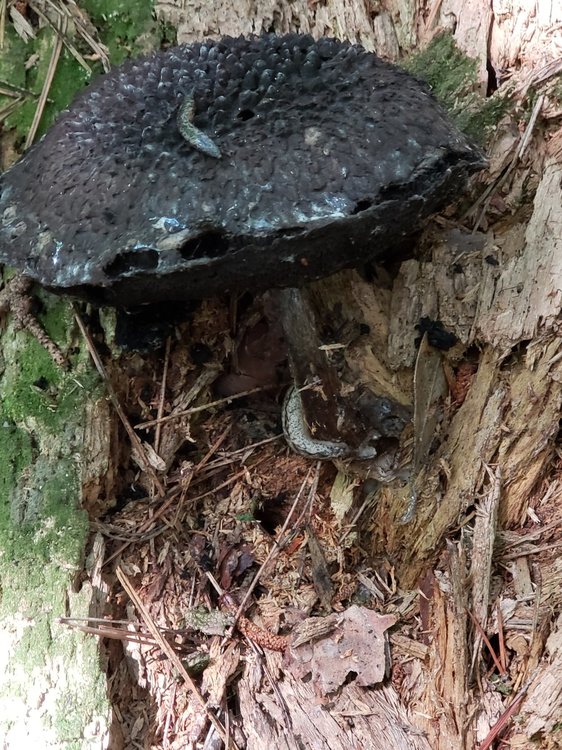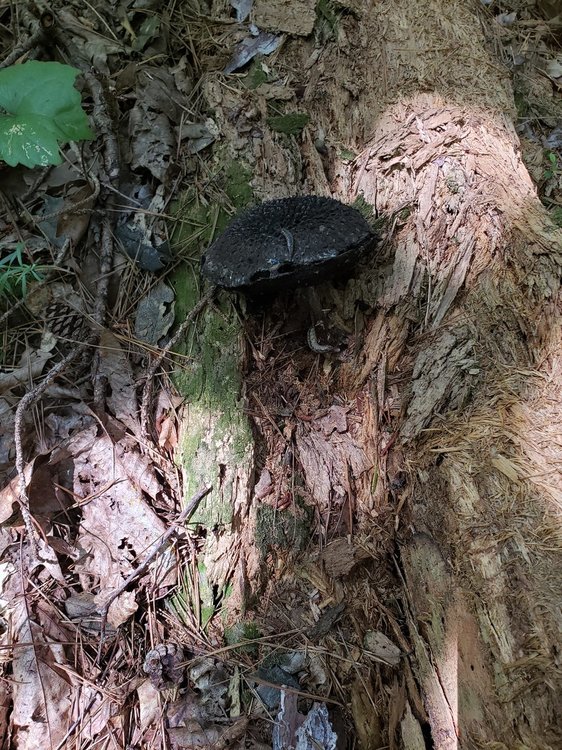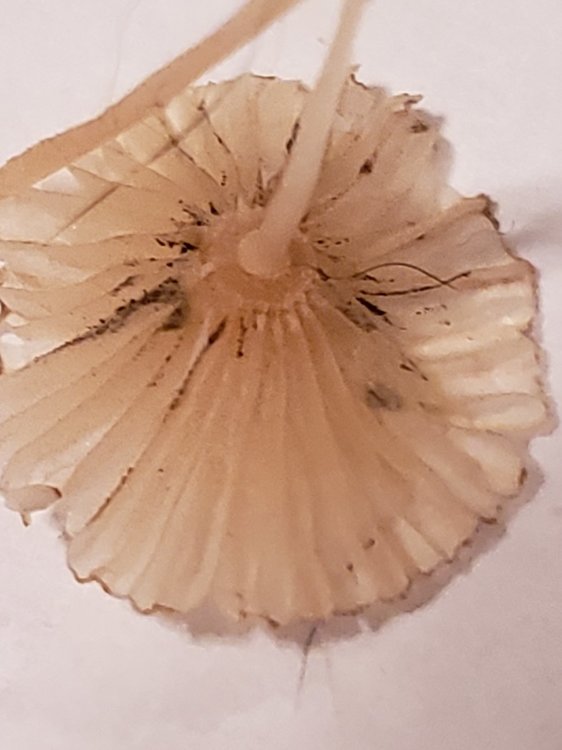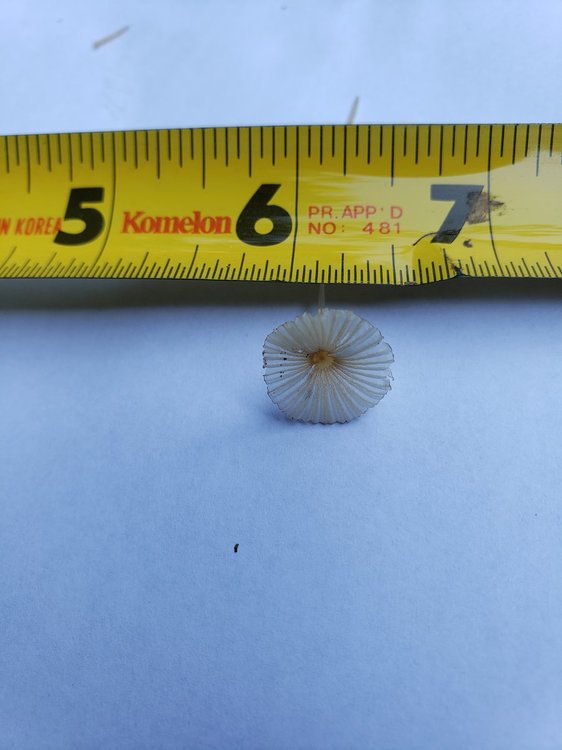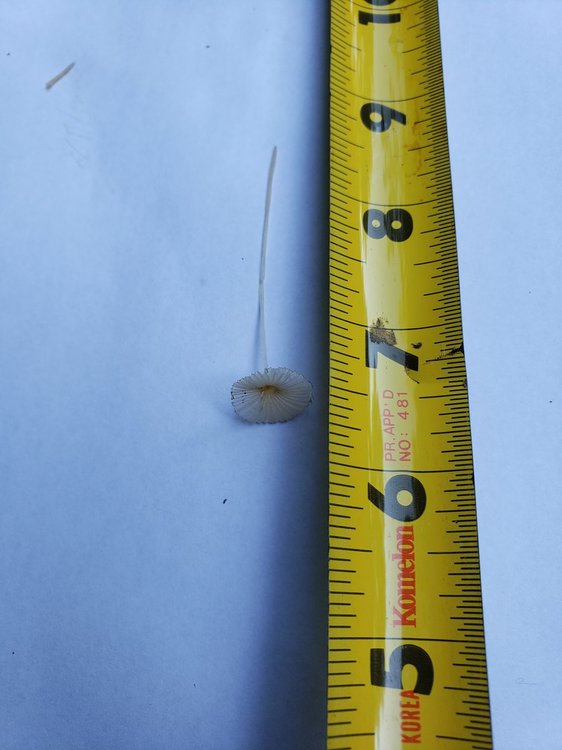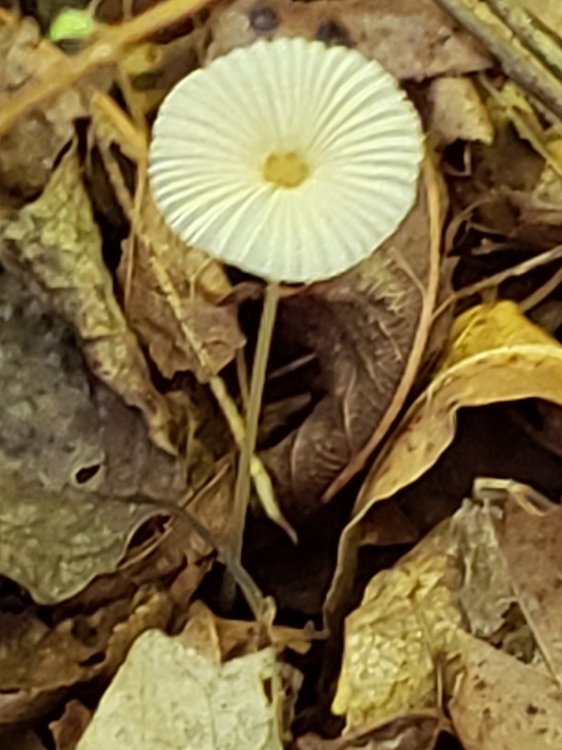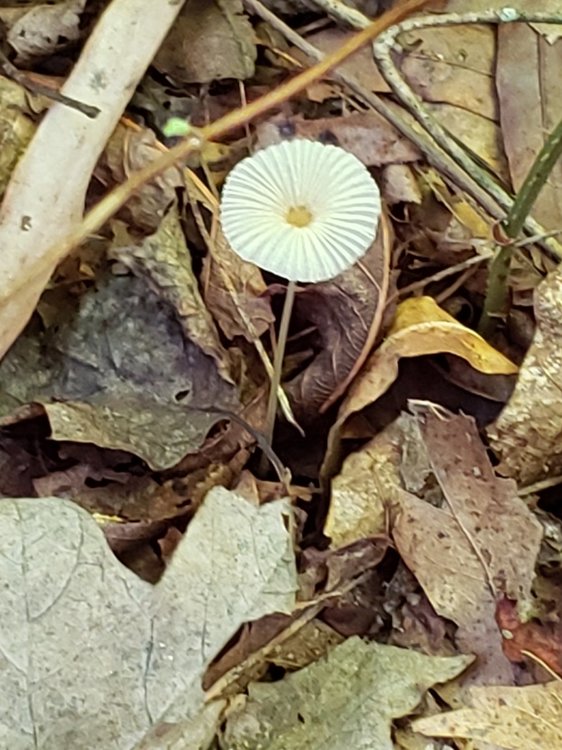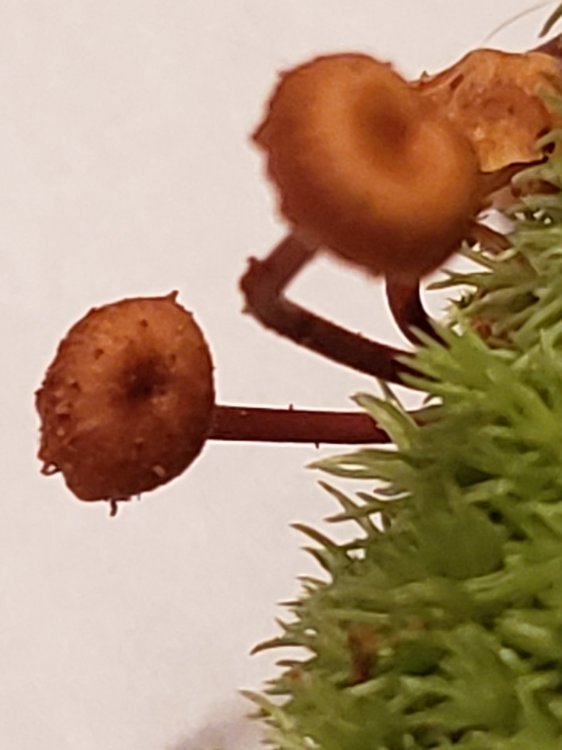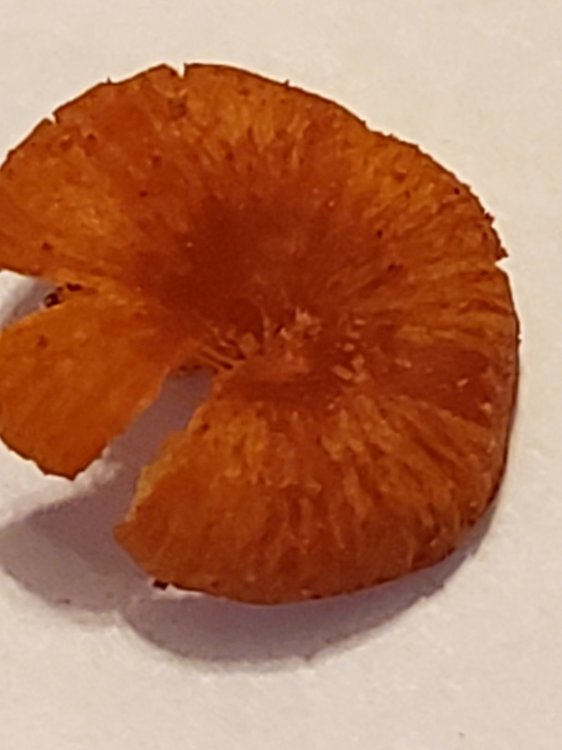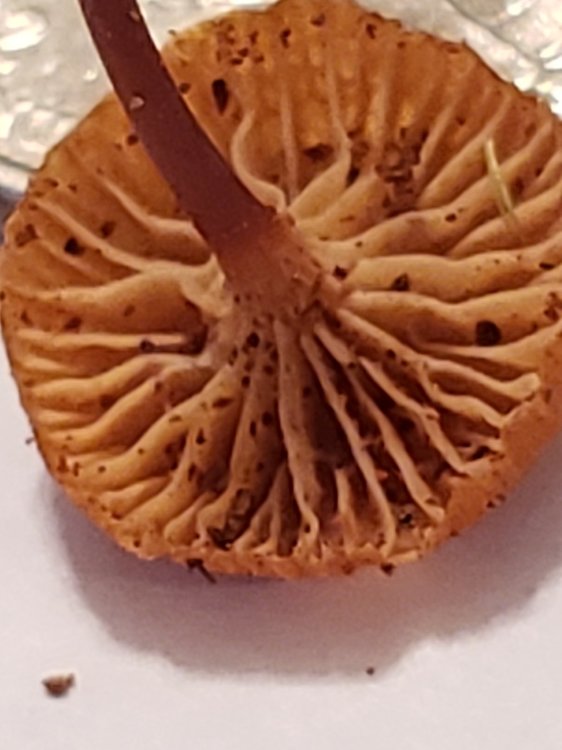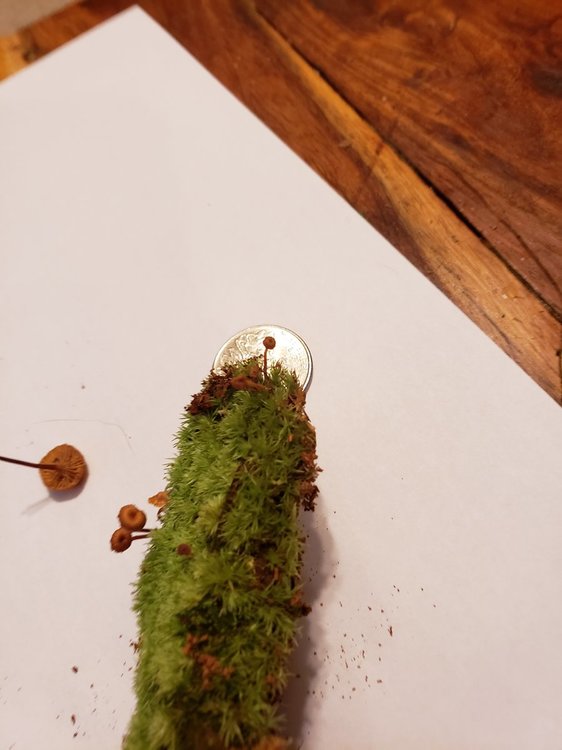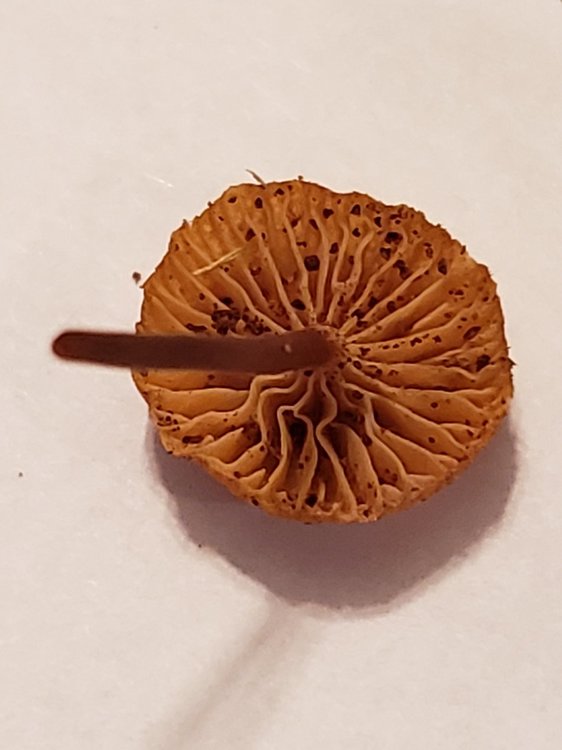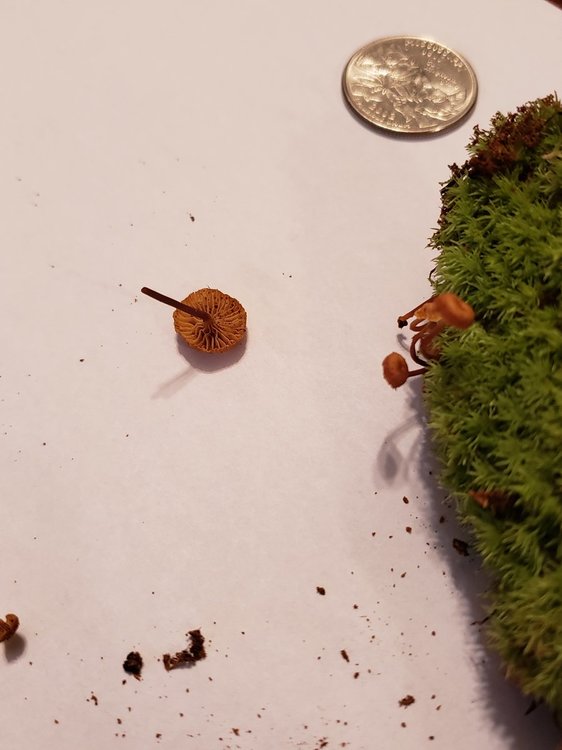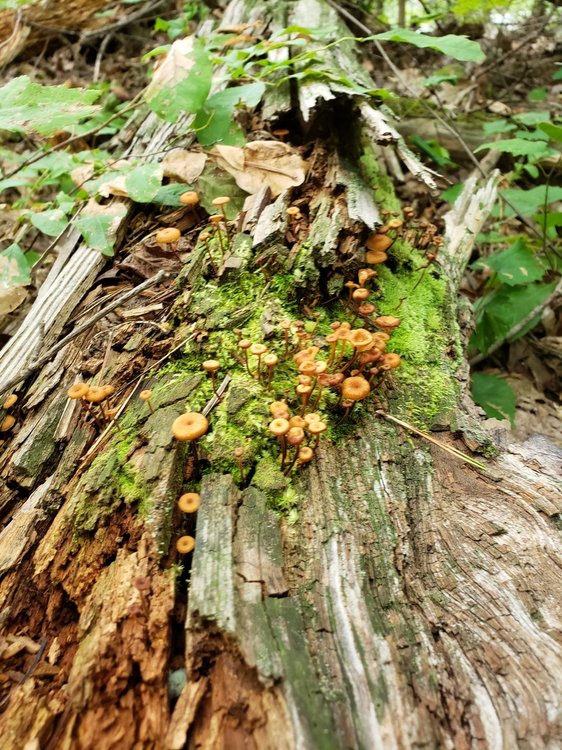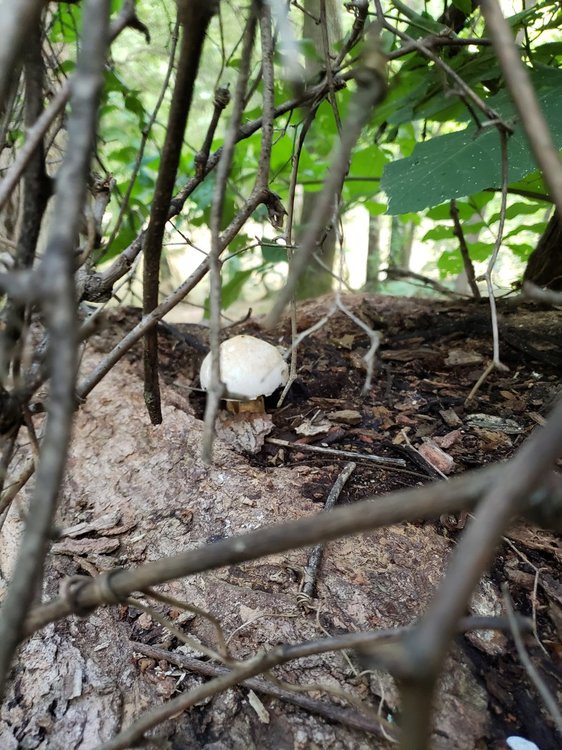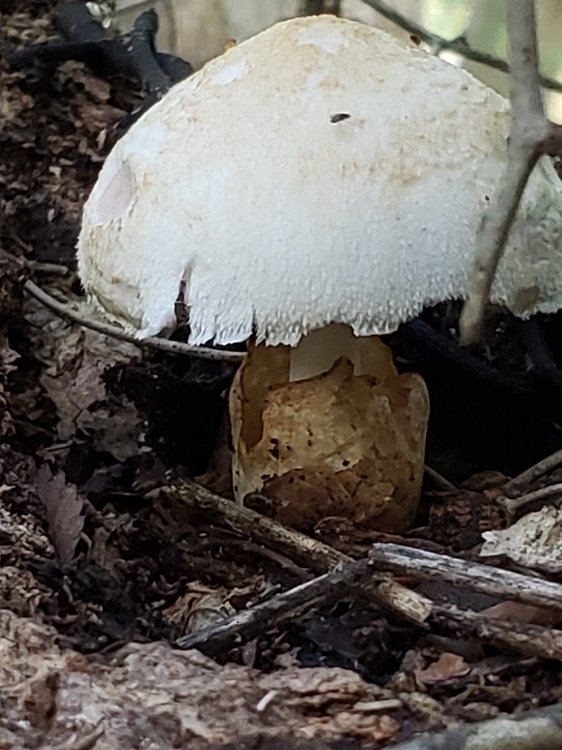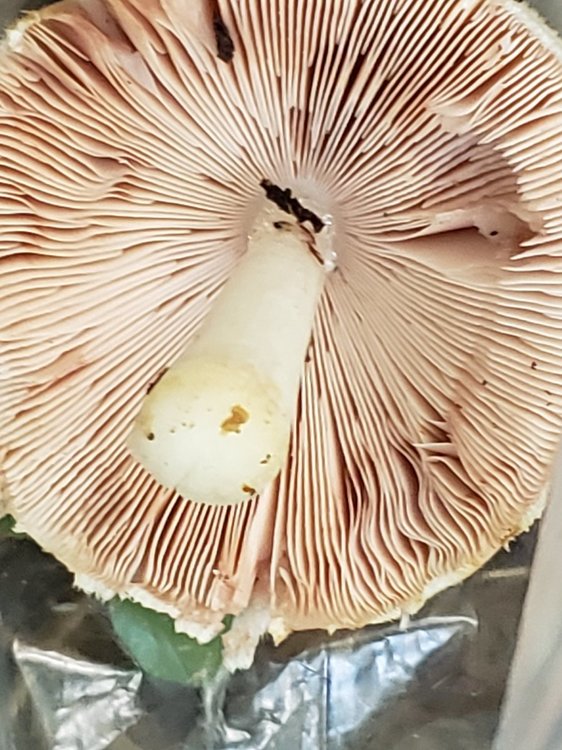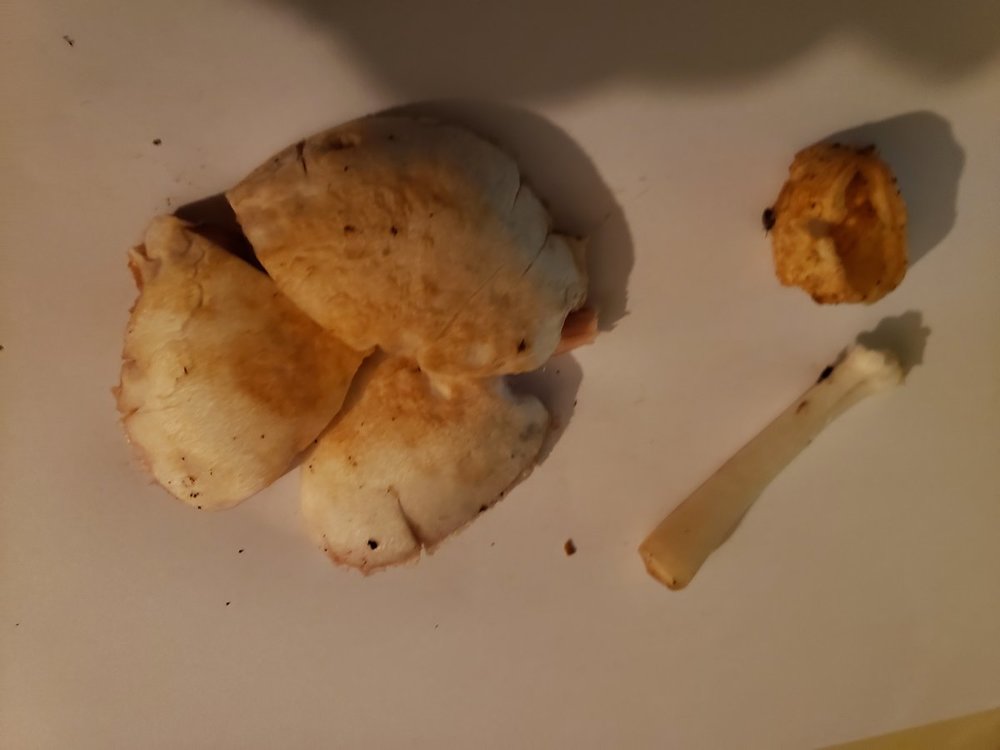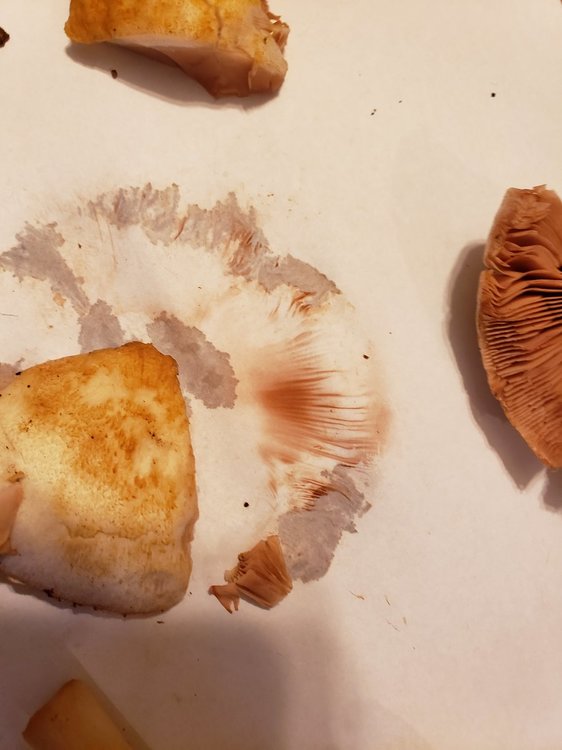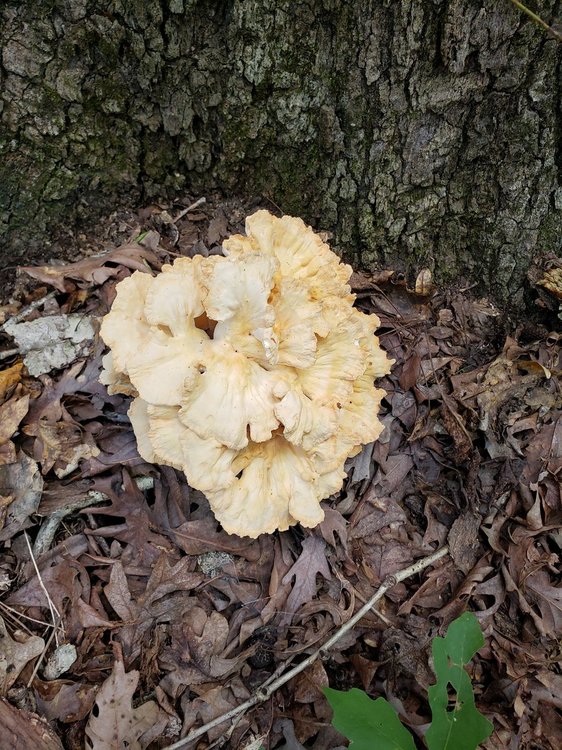-
Posts
20 -
Joined
-
Last visited
Everything posted by ChickenOfTheWoodz
-
Hello again all. I am new, as you may have guessed. I found this in the yard near the edge of the woods. I am not exactly using the most scientific microscope, but who can complain for 3$. Regardless, I have included some mic pics. If anyone can help me understand what it is I am exactly looking at here, that would be great. I am fairly sure some are spore but there seems to be a lot of detritus on the slide as well. The first four photos are from a cross section of the pileus. My guess is that it is an Amanita vaginata, given the lack of ring, location, (other amanitas in the yard), the vulva, the color, etc. But that is just a guess. Thank you.
-
I think this looks like a Strobilomyces or other Boletale. It is full of insects and slugs but was it this black prior to being eaten? Just curious. Thoughts? Thank you.
-
I found this one in the SE U.S. summer season. It seems saprobic. Gills free. No discernible annulus but so small and delicate that it could be tricky to see? I couldn't get the base given the delicate nature of the stipe. Very fragile and nearly transparent. Taking a spore print now, planning to update with a spore print. Thoughts?
-
Also, can we rule out X.Campanella? I am asking for a friend. Just kidding, I am asking because of the more southerly origin.
-
Definitely not hygrophanous. The brown pileus was just as brown when dried. I looked up Xeromphalina c, and noted it is seems more common in the NW U.S. and less so on the East Coast. What really made my jaw drop was the medicinal research that has been done on it. Amazing!!!! Thank you again Dave W. https://healing-mushrooms.net/archives/xeromphalina-cauticinalis.html
-
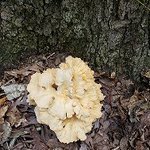
turtle pen mushroom identification
ChickenOfTheWoodz replied to NinjaneerMe1's topic in Identifying Mushrooms
Hello NInja, *I am not an expert* I am new and probably not much help but I think you may have multiple species here. Though the photo is helpful given their habitat, I would want to see more of the anatomy to get a better idea of things like the gills/pores and their connection to the stem, the base of the stem (stipe), the bruising if any, close-ups photos, and a good pic of the spore print. Basically, I am just saying that more information would be super helpful. Do you have more detailed pics? You may want to look at mushrooms that grow in nutrient rich soil/dung. Dung, given that your turtle lives in there. I have read that Protostropharia semiglobata grows in such and it has a "ring" on the stipe with "purple-black" spore prints, though I am in no way saying any of these are such, it could be one of many varieties. I am just trying to point you in a direction to help you rule out or add in possible answers. You may wish to look up look-a-likes of other mushrooms that have a similar appearance/size and cross-reference the details like spore prints and such. I wouldn't eat them. Good luck!!!! -
The last photo was taken in situ. Sadly, the pileus dried overnight before dropping enough spores to get a visible print. I may try again in the future. I placed the moss covered decaying cedar with the specimens (first and third photos) in a bottle with a tablespoon of water in hopes to keep it alive. Not sure this will be successful but worth a try.
-
I found this today. I am fairly sure this is a Tubaria furfuracae. These little brown mushrooms were quite gregarious. Can anyone confirm? The spore print is in process, if needed. Thank you:D
-

Noob Question.
ChickenOfTheWoodz replied to ChickenOfTheWoodz's topic in General Mushroom Discussion
Thank you SVS, I am quite new and wanted to be sure to ask instead of risking mistakes. -

Amanita Some Guidance Please. :D
ChickenOfTheWoodz replied to ChickenOfTheWoodz's topic in Identifying Mushrooms
Thank you again Dave W, Yes the first three ( harvested Amanita) pictures, are actually the same as the the 5th and 6th. I harvested the mushroom on an five hour hike on a hot day. Then rode home for an hour. The white hue turned more yellowish for some reason, as did the poor thing wilt seriously in a ziploc bag of the trip home. There are before and after pics (1,2,3,5,6,) and the fourth picture was of a neighboring Destroying Angel Aminita that was fairly easy to identify in the field, that I was showing in comparison. I apologize for the confusion. I really appreciate your help. Thank you.- 3 replies
-
- amanita
- amanita mushroom
- (and 5 more)
-

Strobilomyces it seems.
ChickenOfTheWoodz replied to ChickenOfTheWoodz's topic in Identifying Mushrooms
Thank you Dave. Are all Strobilomyces called "Old Man of The Woods?- 3 replies
-
- polypore
- mushroom id
- (and 5 more)
-

My First Identified Mushroom Ever
ChickenOfTheWoodz replied to 74quinn74's topic in General Mushroom Discussion
Very cool Quinn. I am new as well and I have no idea what that is but if I stumble across anything to support your guess, I will pass it on to you. Have fun. -
New and trying to collect, Identify, and study mushrooms on my own for fun, not for eating. I have some concern about studying the more poisonous mushrooms. How dangerous is it to handle species like Amanita or bring them into the study room? There are no young people around, wear gloves while collecting and studying them, collect and transport them in a ziploc, and wash my hands and surfaces after the fact. Somewhere I read that one has to ingest the fruit to get sick and that the spores don't really create a danger so I am just trying to be careful when I do handle them for spore printing etc. What advice do you more experienced mushroom hunters have for a noob on studying the more sinister of the mushroom species? Thank you.
-

Is this a Chicken of The Woods?
ChickenOfTheWoodz replied to ChickenOfTheWoodz's topic in Identifying Mushrooms
OMG Cajun, that sounds pretty awful. I bet you won't do that again. Glad everyone was OK over all, though.- 6 replies
-
- wild mushroom
- north carolina
- (and 4 more)
-
I found this southeastern U.S. Strobilomyces today. Not sure if it is an Old Man of The Woods or is that a generic term for all Strobilomyces? Not unlike the Amanita, sorting out the subspecies seems a bit elusive from the macro observations and online reference searching. Can anyone confirm, please? Guessing: Strobilomyces confusus Strobilomyces dryophilus Observations: 1) Growing under a conifer. 2) Summer Southeastern U.S. Summer Season. 3) Prickly looking pileus. 4) Woody looking stipe. 5) Polypore. 6) Gray/brown spore print. 7) Stipe was firm. 😎 Smelled like a fresh mushroom. (A. bisporus) 9) Pileus was approximately 3 inches in diameter. 10) No neighboring mushroom were obvious. 11) Stipe was fibrous internally. 12) The specimen darkened (as seen in the pics) on the way home. Thank you.
- 3 replies
-
- polypore
- mushroom id
- (and 5 more)
-
While hiking this afternoon, I coma across many mushrooms. I collected three specimens and I have been working for several hours to identify them all. The one that seems tricky is the Amanita I found. Though it presents as an Aminita, I surely learned that identifying the exact subspecies(?). After going through many online lists and associated photos and descriptions, I was at a loss and it began to feel somewhat frustrating. So I thought I would post some guesses (and the photos) for some more experienced eyes. My overall take-away from the experience is that for general purposes, knowing it is an Amanita is enough for now and that the exact taxonomy will be saved for my self-schooling 201 class when I have more time to go through all the thousands of varieties. Also I noted that in some pics online it seems that several different looking mushrooms have been titled, "Destroying Angel" I am not sure if they are all the same subspecies or if this a a generic term for many of the Amanita? Thoughts? My macros that seem distinct: I am not denoting that the gills are free from the stipe (seems odd for an amanita but I could be misinterpreting the meaning.) and the pileus seems slightly bumpy like a strobilomyces, could it be veil remnants, perhaps? I also did not not a distinct annulus? But possibly it is just not super obvious? Guesses: Aminita Verosa Aminita Vaginata Aminita Strobiliform Amanita Ravenelii Amanita Cokeri Amanita Roanokensis *It doesn't seem to exactly fit any one of these but that could be my inexperience. OBSERVATIONS: 1) All white, white-gilled, mushroom was growing near but not on conifers. 2 ) No distinct smell to speak of. 3) Slight bumps on the pileus. 4 ) No clear evidence of veil/annulus. 5) Firm stem 6) Taller Amanita varieties near by with annulus and veil, smoother pileus. (pic included the 4th pic down that is different from the subject specimen.) 7) WHITE SPORE PRINT 😎 Shaggy looking stem 9) 2" +/- pileus 10) Southeastern U.S. summer season 11) The specimen seemed to yellow over a few hours on the way home. Any advice on this or demystifying other Amanita varieties is very much appreciated. Thank you.
- 3 replies
-
- amanita
- amanita mushroom
- (and 5 more)
-

OMG! I think I did it. Can anyone confirm?
ChickenOfTheWoodz replied to ChickenOfTheWoodz's topic in Identifying Mushrooms
Thank you both of the assessments. Really appreciated. Dave W. Is there any chance it may be a Volvariella gloiocephala? -

OMG! I think I did it. Can anyone confirm?
ChickenOfTheWoodz posted a topic in Identifying Mushrooms
Hello everyone. Thank you to all who helped with my last identification. Alas, I think I figured this one out myself. I was hiking this evening in NC and found the cool mushroom in the pics. I scavenged a zipbag from my day-pack and harvested the specimen. I photographed it and took it home to spore print and identify. (See pic, please.) I tried an app to identify it and it came back as something completely wrong, with several more suggestions that were easily ignored. I will not name the app. A few minutes on the internet, and I am fairly certain it is a Volvarialla bombycina. Being new, I am hoping someone could help with a confirmation. I have also concluded that I would be wrong. It could be a different subspecies of Volvariella or Volvopletus or worse something completely frightening but all signs seem to point toward the Variella b. mushroom. Again, no one is eating it, just learning. Let's see if I can do this right and sound intelligent. OBSERVATIONS: 1) The mushroom was growing alone in some "Mulch" in a dead hardwood tree on a small freshwater island in NC in early August. 2) The mushroom smelled similar to a portabella or variant. 3) The volva was intact upon discovery. 4) The gills (lamellae) were salmon colored. (Similar Copic Marker RV42 Salmon Pink) 5) The cap (pileus) was "fuzzy" looking up close. (See pic Volv6) 6) When separating the stem (stipe) from the cap (pileus) it was firmly attached and broke into three pieces as seen in the pic (volv1). 7) The pieces were very moist and it took nearly an hour to get a good spore stain. 😎 The spore stain is a rusty reddish brown color. (Similar to Pantone 18-1248 TCX swatch) 9) Ants were on it. (Not sure this is relevant.) 10) Cap was approximately 4"-5" in diameter. Thank you all for your patience and help. -
Thank you for the welcome, Cajun.
-

Is this a Chicken of The Woods?
ChickenOfTheWoodz replied to ChickenOfTheWoodz's topic in Identifying Mushrooms
Thank you Dave W. That is interesting. So much to learn. Going to look up staining now. Also looking into spore prints today. Fascinating!!! I also just saw on Wiki this: "The mushroom can be prepared in most ways that one can prepare chicken meat. It can also be used as a substitute for chicken in a vegetarian diet. Additionally, it can be frozen for long periods of time and retain its edibility. In certain parts of Germany and North America, it is considered a delicacy. L. sulphureus prepared dish In some cases eating the mushroom "causes mild reactions ... for example, "swollen lips" or in rare cases "nausea, vomiting, dizziness and disorientation" to those who are sensitive.[5] This is believed to be due to a number of factors that include allergies to the mushroom's protein or toxins which are only somewhat stable at high temperatures. As such, many field guides request that those who eat Laetiporus exercise caution by only eating fresh, young brackets and begin with small quantities to see how well it sits in their stomach." Has anyone experienced a reaction to Chicken of The Woods? I have seen it (or Hen of the woods, perhaps) used in cooking shows and would never have thought that it would be an issue. Very interesting how preparation can be so important to particular species.- 6 replies
-
- wild mushroom
- north carolina
- (and 4 more)
-

Is this a Chicken of The Woods?
ChickenOfTheWoodz replied to ChickenOfTheWoodz's topic in Identifying Mushrooms
Thank you Steve. What are the odds of confusing this with another? I am new and so very eager to learn.- 6 replies
-
- wild mushroom
- north carolina
- (and 4 more)
-
Hi. Love this forum. I spend a lot of time outdoors and have always wondered what all the mushrooms were called or used for. Hoping to learn lots of interesting things about Mushrooms.
-
Hello, noob here. I found this on a backpacking adventure in mid July (About a week ago) in Central North Carolina. It looks delicious, thought not being an expert, I didn't and probably will not harvest or eat it. I am curious what it is and whether it has an look-a-likes or other things to be concerned with. Again, not going to eat it but I do think it is a shame that I don't know more about what I can and can't eat in the mushroom world, so unless I chicken out, wild mushrooms may be a new adventure. I tried looking it up and it looks to me like something akin to A Chicken of The woods but I have no idea what I am talking about. Also there were a ton of inch tall orange mushrooms I had no idea what were. They were super bright orange-red. Surely they looked like something Snow White would do best to avoid. Any info on the topic would be appreciated. Thank you.
- 6 replies
-
- wild mushroom
- north carolina
- (and 4 more)


